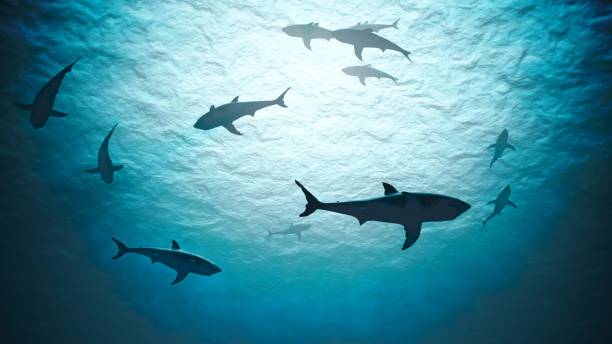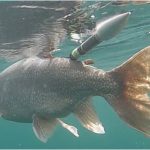← Back
The Argos Goniometer recovers data of a tagged fish eaten by a predator
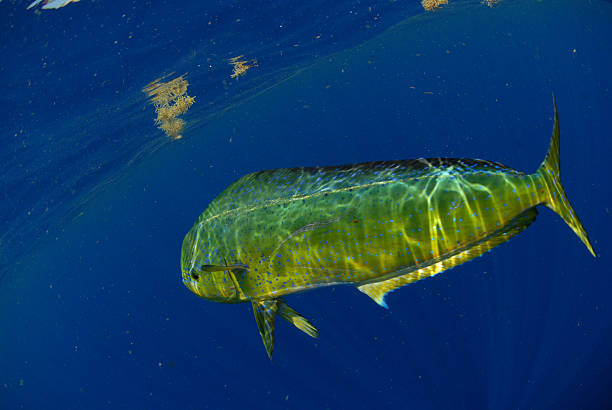
Scientists Chiang, Wei-Chuan (Riyar) & Shian-Jhong Lin, from Eastern Marine Biology Research Center of Fisheries Research Center, Taiwan and Michael K. Musyl from Pelagic Research Group LLC, have been studying the movement patterns and habitat preferences of Dolphinfish in Taitung. They recently recovered an Argos archival tag, that had released prematurely, using the Argos Goniometer. The premature release was an unfortunate surprise for the study, however the data recovered held the biggest surprise of all – a suspected and rare predation event.
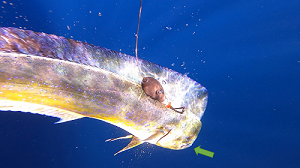
Dolphinfish (~75 cm FL) tagged with a MiniPAT pop-up satellite archival tag in Eastern Taiwan on 2020/11/18, 08:43:44 (Fig. 1). Arrow indicates the position of the mouth and eye
The Dolphinfish or mahi-mahi (Coryphaena hippurus) is a ray-finned fish that dwells mainly on the surface. We can often find them in off-shore temperate, tropical, and subtropical waters worldwide. However, there is little information regarding population numbers thereby raising concerns in the current Fishery Improvement Plan (FIP) for Taiwan.
This has led to studies investigating the movement patterns and habitat preferences of dolphinfish in Taitung (Southeastern Taiwan) by researchers at the Eastern Marine Biology Research Center, Fisheries Research Institute, with funding from the Council of Agriculture in Taiwan.
During the course of these studies, the scientists tagged a dolphinfish captured from coastal longline gear off eastern Taiwan with a pop-up satellite archival tag on 18 Nov. 2020.
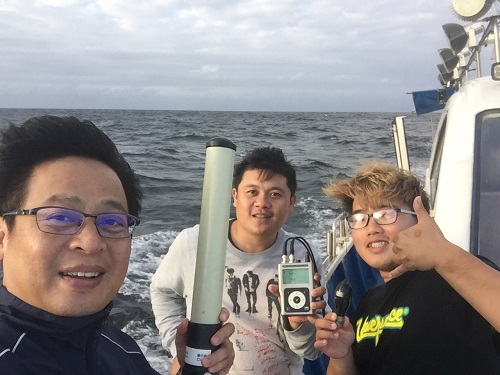
The team recovered the tag using the Argos Goniometer
Data recovery with the Argos Goniometer
After five and a half days, the tag popped-up to the surface and transmitted archived and real-time data to the Argos constellation on 24 Nov. 2020. The Argos Doppler locations allowed the rescue mission to start.
Just like a previous article about finding sunfish, the tag was physically recovered off northern Taiwan using, the Argos Goniometer, a platform finder designed by CLS specifically to find active Argos tags in the field, on 25 Nov. 2020. With the tag recovered, the team began analyzing the reason behind the early release.

Ambient depth (upper), light intensity (middle) and temperature profile (lower) data.
Surprising results
The temperature, depth and ambient light intensity data series extracted from the recovered tag seemed to indicate normal vertical movements (v-shaped and w-complex dives) after tagging until the data suddenly changed.
The archived data shows that there was a sharp drop in ambient light level along with significant changes in temperature and depth patterns. Based on this, the most probable hypothesis is that a predator ingested the tag while it was still attached to the mahi-mahi. 39 hours later, the tag shows normal recordings for a surfaced tag, having probably been regurgitated.
Analyzing data to determine the predator
The abrupt changes in temperature and depth patterns, as well as the theory that thermal inertia could further impact the readings, means the scientists have been able to reduce the list of potential predators.
After investigating, the team believes that a large ectothermic predator ingested the tag. If an endothermic predator had ingested the tag, the temperature readings inside the body would be relatively steady. They would also show a lag between depth readings and there would be fewer extreme oscillations.
According to previously published studies, comparing diving patterns for this unknown predator against a database of diving patterns for several known species of pelagic sharks and teleosts using clustering or other “CART” (classification and regression trees) techniques may provide species identifications to a high degree of probability thereby narrowing the list even further.
References
- Lin, S. J., W. C. Chiang, M. K. Musyl, S. P. Wang, N. J. Su, Q. X. Chang, Y. S. Ho, I. Nakamura, C. T. Tseng, and R. Kawabe. 2020. Movements and habitat use of dolphinfish (Coryphaena hippurus) in the East China Sea. Sustainability 12: 5793.
- Lin, S. J., M. K. Musyl, S. P. Wang, N. J. Su, W. C. Chiang, C. P. Lu, K. Tone, C. Y. Wu, A. Sasaki, I. Nakamura, K. Komeyama, and R. Kawabe. 2019. Movement behaviour of released wild and farm-raised dolphinfish Coryphaena hippurus tracked by pop-up satellite archival tags. Fisheries Science 85:779-790.
- Musyl, M. K., R. W. Brill, C. H. Boggs, D. S. Curran, T. K. Kazama, and M. P. Seki. 2003. Vertical movements of bigeye tuna (Thunnus obesus) associated with islands, buoys, and seamounts near the main Hawaiian Islands from archival tagging data. Fisheries Oceanography 12:152-169.
- Musyl, M. K., R. W. Brill, D. S. Curran, N. M. Fragoso, L. M. McNaughton, A. Nielsen, B. S. Kikkawa, and C. D. Moyes. 2011. Postrelease survival, vertical and horizontal movements, and thermal habitats of five species of pelagic sharks in the central Pacific Ocean. Fishery Bulletin 109:341-368.

